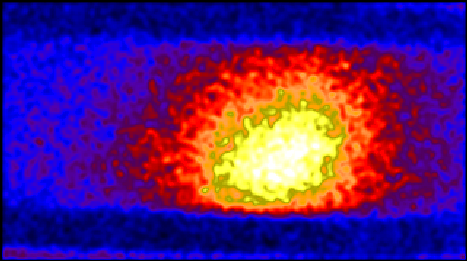
|
Explanation: As the Sun floods Comet Hyakutake with ultraviolet light gases in the coma scatter the radiation and fluoresce making the comet a bright source in the ultraviolet sky. The above image made using data from NASA's Extreme UltraViolet Explorer (EUVE) satellite, represents the intensity of the comet in this invisible high energy band in false color. The image is about 3/4 of a degree high and 2 degress wide and offers insights to the composition of this visitor from the distant solar system that can be obtained from the highest energy bands of the ultraviolet spectrum. The International Ultraviolet Explorer (IUE) satellite has also examined ultraviolet light from the comet and now reports the detection of many bands of molecular emission particularly those due to molecular carbon (C2), carbon monoxide (CO) and caron dioxide (C02) ions as well as indications of a rapid increase in the production of water (H20).
Latest Comet Hyakutake images:
JPL,
Fayetteville
Observer-Times,
NASA's Night of
the Comet,
ICSTARS,
Crni Vrh Obs.,
Cent. Mich U.
|
January February March April May June July August September October November December |
| ||||||||||||||||||||||||||||||||||||||||||||||||
NASA Web Site Statements, Warnings, and Disclaimers
NASA Official: Jay Norris. Specific rights apply.
A service of: LHEA at NASA / GSFC
& Michigan Tech. U.
Based on Astronomy Picture
Of the Day
Publications with keywords: comet - euve - ultraviolet
Publications with words: comet - euve - ultraviolet
See also:
- APOD: 2025 December 1 Á 3I ATLAS: Tails of an Interstellar Comet
- APOD: 2025 November 25 Á Comet Lemmon and the Milky Way
- 3I/ATLAS: A View from Planet Earth
- APOD: 2025 November 17 Á Comet Lemmons Wandering Tail
- APOD: 2025 September 30 Á Comet Lemmon Brightens
- APOD: 2025 September 29 Á Two Camera Comets in One Sky
- APOD: 2025 September 26 Á A SWAN an ATLAS and Mars
